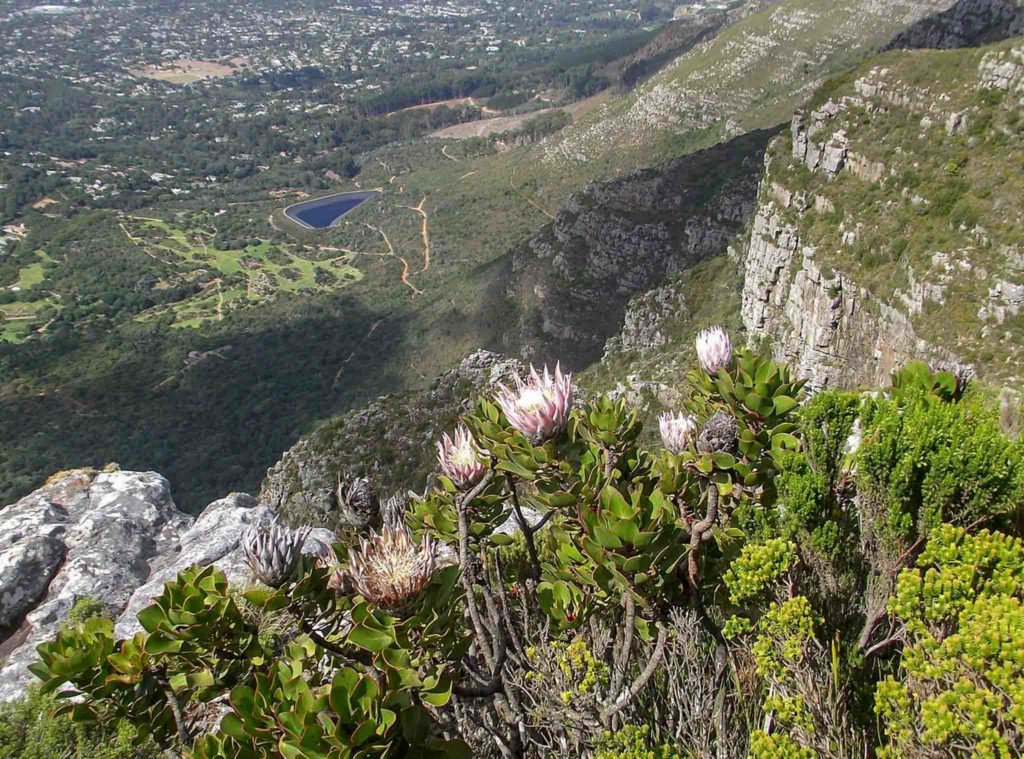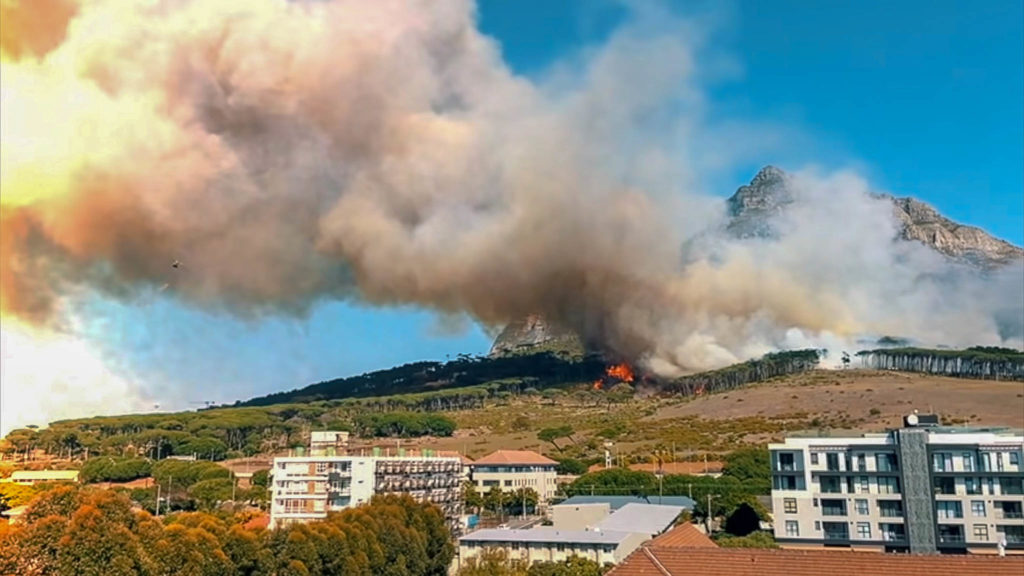A huge fire raged on Table Mountain in Cape Town in april 2021. The fire destroyed large areas of nature as well as buildings at the foot of the mountain, such as the university library with its rare treasures. After three days of putting out fires, the South African fire brigade managed to control and extinguish the Table Mountain fire. The inferno is over, but begs a burning question: Could this fire have been prevented?
The fire, which burned from April 18th to 20th, starts near the Rhodes memorial on Devil’s peak. The nearby restaurant is the first building to catch fire. Later that day, flames destroyed the Jagger library and part of the Cape Town University campus. After which the historic Mostert’s Mill, the oldest windmill in South Africa, was engulfed in fire. In total, the fire destroyed 600 hectares.
Highly flammable fynbos
It is nothing new that fires start around Table Mountain. There is even a fire season, when bushes around the mountain are more likely to catch fire. “That’s even a good thing”, explains botanist Zoë Poulsen. “A lot of fynbos grows around Table Mountain. This flammable shrubbery lives best by burning every ten to fifteen years. This allows its new seeds to germinate. When the fynbos doesn’t burn within that timespan, it builds up exponentially more fuel. If a fire then starts, it is much more intense.”
Poulsen conducted large-scale research on fynbos in Table Mountain National Park a few years ago. The Cape Town botanist was shocked when she had a look at the same Table Mountain a week and a half ago. “There were huge clouds of smoke coming from Table Mountain. I was several districts away from the fire and yet we could smell the smell of burning”, Poulsen recalled. “We could even see the fire on top of Devil’s Peak.”

According to Poulsen, the fire turned into a huge conflagration due to a combination of factors. “It was kind of the perfect storm. On the day itself, there was a strong wind. The fire started at fynbos that had not burned in too long, so that the large amounts of fuel caused a lot of fire. Between this fynbos there were pine trees, which should had been removed already. These trees contain a lot of oil, which made the flames more intense and hot. The flames reached the gas cylinders of a nearby restaurant, which then exploded. The wind quickly spread the fire to even more old fynbos and pine trees.”
Shared responsibility for nature maintenance
The management of Cape Town and the organization of South African National Parks is responsible for the maintenance of flora and fauna. The Cape Town government is responsible for the fynbos in and around the city. South African National Parks is responsible for maintaining wildlife on the slopes of and on top of the Table Mountain.
Head of Communications at South African National Parks, Rey Thakhuli, is proud of how the fire was fought: “We had more than 175 firefighters fighting the blaze for three days. Together with helicopters, which threw water bombs, the job was done.” As for the cause of the fire, Thakhuli declined to go into details. “At the moment, a lot of research is being done. We expect to have an investigation report by the end of next week.”

Ticking time bomb
According to botanist Poulsen, the situation is less rosy: “If the wind hadn’t changed direction after Monday, the damage would have been many times greater. There is fynbos on the slopes towards Kirstenbosch, which has not caught fire for over sixty years. Houses have been built between them and the people there unknowingly live next to a ticking time bomb. It is logical that local residents do not want to burn the fynbos as a preventive measure because of the risk that their own houses could catch fire. On the other hand, the longer you wait, the more fuel is created. The question is not whether that fynbos will catch fire, but when.”
They also recognize this problem at South African National Parks. “Fynbos is known to be highly flammable. We are therefore obliged to preventively incinerate fynbos every ten to fifteen years. However, for some parts we have to request this in advance from the Cape Town board. Then, local residents can lodge an objection. As a result, we regularly do not get a permit”, explains Thakhuli.
Whether such a violent fire will start again in the near future, remains unclear. The investigation has yet to show whether there has actually been overdue maintenance surrounding the fynbos and pine trees. If this is the case, then a critical and adequate look must be taken at the places where the fynbos has been able to build up fuel and where the pine trees are. By doing so another disastrous Table Mountain fire can be prevented.
The main photo was taken by Carolina Ödman


Recent Comments